Proper lighting is crucial for people with low vision. This post will help deepen your understanding of why lighting is so important, and how using LED lamps can help enhance your remaining vision.
Low vision lighting: 6 things you should know
- Why is proper lighting important for low vision?
- Some of the most common eye conditions causing vision loss
- What is the most important aspect of lighting for low vision?
- What are the best bulbs for low vision?
- What to look for in a low vision lamp
- What is the best lamp for the visually impaired?
Proper lighting maximizes remaining vision
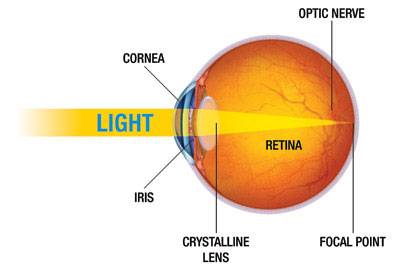
Source: nkcf.org
To take a picture, a camera must have an adequate light source. Likewise, the eyes must be able to process light in order to see.
- Light first passes through the cornea, which begins to focus the image.
- The lens adjusts the focus.
- A clear image is produced on a sheet of photoreceptors called the retina, located at the back of the eye.
- Photoreceptors gather visual information by absorbing light and ultimately sending signals to the brain via the optic nerve.
- The brain processes the image, allowing us to see.
When the visual process is interrupted due to aging and/or eye disease, the result is decreased visual acuity, color intensity and contrast sensitivity. As contrast sensitivity decreases, more light becomes necessary in order to see. Decreased contrast sensitivity is a normal symptom of aging but is typically intensified in the presence of other eye conditions such as macular degeneration.
We can also think about the light requirement of our eyes in terms of aging. Studies show that in order to experience the same perception of brightness, a 60 year-old adult typically requires around 15 times as much light as a 10-year-old child.

A person with normal visual acuity but poor contrast sensitivity might see the trees in the foreground clearly (high contrast), but have trouble seeing the contours of the mountains against the sky in the background (low contrast).
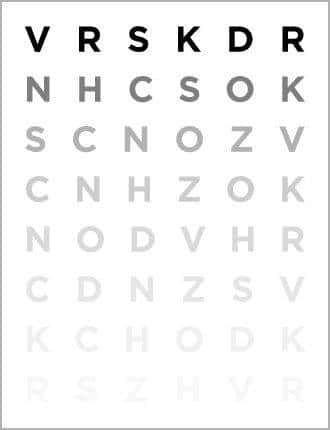
The Pelli Robson contrast sensitivity chart tests your ability to detect letters that are gradually less contrasted with the white background as your eyes move down the chart. (Source: allaboutvision.com)
Common eye conditions causing vision loss
Macular Degeneration

Source: rgbeyeassociates.com
The macula is the light-sensitive area of the retina. Its job is to manufacture clear, sharp vision in the central visual field. As it breaks down, central vision deteriorates while peripheral vision remains intact.
Retinitis Pigmentosa

Source: williamsoneyeinstitute.com
The photoreceptor cells of the retina, responsible for converting light into electrical impulses for the brain, gradually degenerate and eventually stop working.
Glaucoma
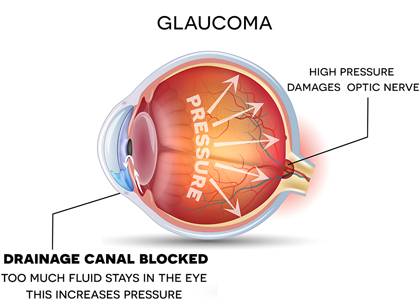
Source: bennetteyeinstitute.com
Glaucoma is a group of eye conditions causing damage to the optic nerve due to abnormally high pressure in the eye. Early detection and treatment are key to managing the disease.
Aging (presbyopia)

Source: rosineyecare.com
With aging, the lens hardens and loses flexibility, no longer changing shape to focus on close-up images. Images are often blurry, and more light may be needed to see.
The most important aspect of lighting for low vision
Low vision lights, such as low vision reading lamps or low vision floor lamps, must have thoughtfully designed controls. Those with visual impairment should exert maximum control over their lighting environment to enhance functional vision and overall quality of life. Each person is different, and each may have unique sensitivities to different types of bulbs, light colors, and intensities. The goal is to find the most comfortable lighting set-up that allows you to see better while reducing eye strain. To do so, you should exert control over the following key areas of your lighting environment.
- Uniformity. Your working area should be brightly and evenly lit. Avoid dim spots that can be unsafe and/or can cause eye strain.
- Angle. Use an adjustable lamp and position the lamp to the side to minimize glare.
- Intensity. Adjust the light’s intensity to suit different tasks. It can be helpful to have two adjustable lamps on either side of the task to increase light intensity and minimize shadows.
- Temperature. To maintain a comfortable and safe environment, your light should not generate much heat. It should be cool to the touch.
- Color. Traditional bulbs have a yellow tinge which can distort contrast and colors and produce glare. Other bulbs such as LEDs produce clean crisp light, creating a relaxing and healthy lighting condition for your eyes. They also increase contrast and clarity and reduce glare.

The best bulbs for low vision
LED lamps for low vision
LEDs are easily adjustable, remain cool to the touch, and are environmentally friendly and more economical than traditional lightbulbs. When integrated with a flexible lamp that is designed to diffuse light evenly, LEDs are the best lighting solution for low vision. LED bulbs have many benefits. They are:
- More economical. Because they last longer, are more durable, and do not require bulb replacements, LEDs save significant costs over time.
- Built to last. LEDs outlast other bulb types by thousands of hours.
- More energy efficient. Replacing a single 60 watt light bulb with a LED results in a reduction of approximately 353 lbs of CO2 emissions per year.
- Brighter. LEDs are much brighter and shine with more intensity than other bulbs.
- Lower temperature. LEDs do not use heat to generate light. They run cool, instead.
- Directional. LEDs emit light in one direction rather than all around, making them ideal for task lighting.
- More durable. With no filaments or other fragile parts, LEDs can withstand more impact and perform equally well in all climates.
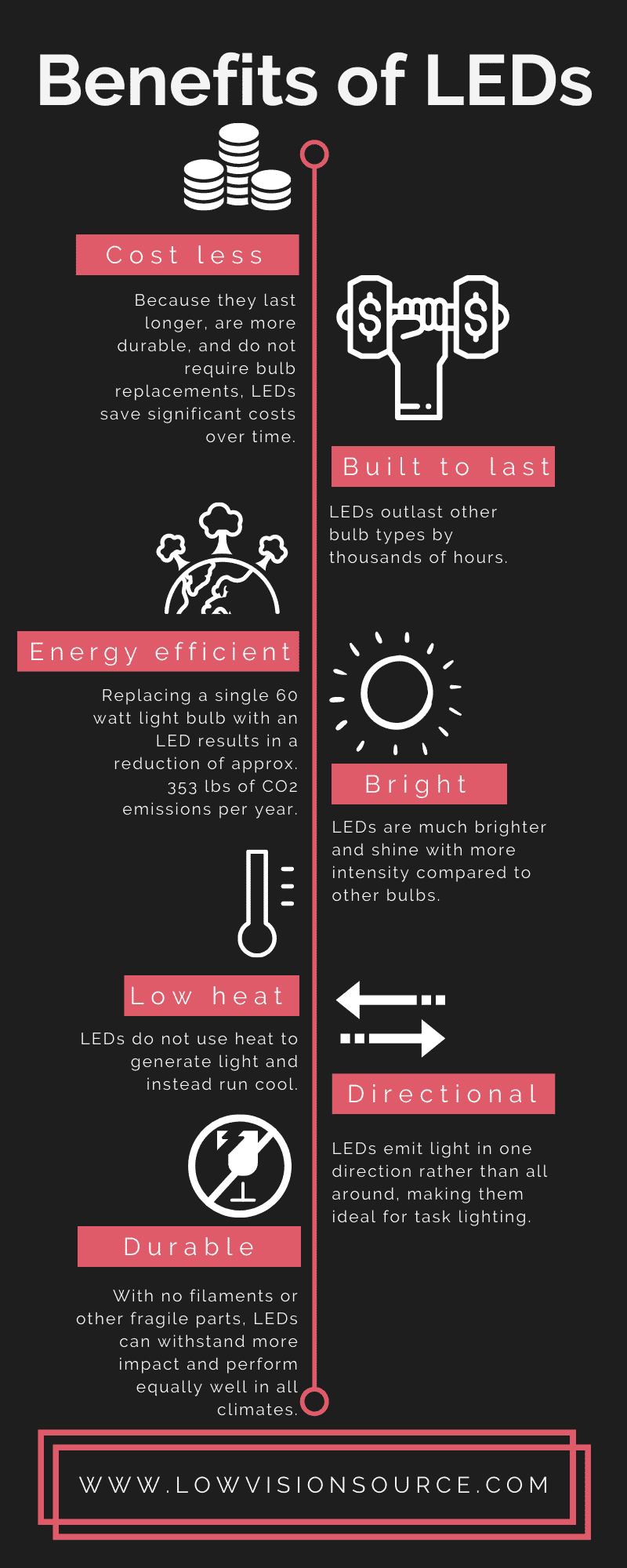
What to look for in a low vision LED lamp
When it comes to LEDs, not all bulbs are created equal. Bulbs from well-known, trusted brands are built-to-last and provide the most direct light while consuming less energy. Additionally, the best low vision reading lamps and low vision floor lamps have high-quality diffusers that distribute light uniformly for optimal viewing.
LED reading lamps
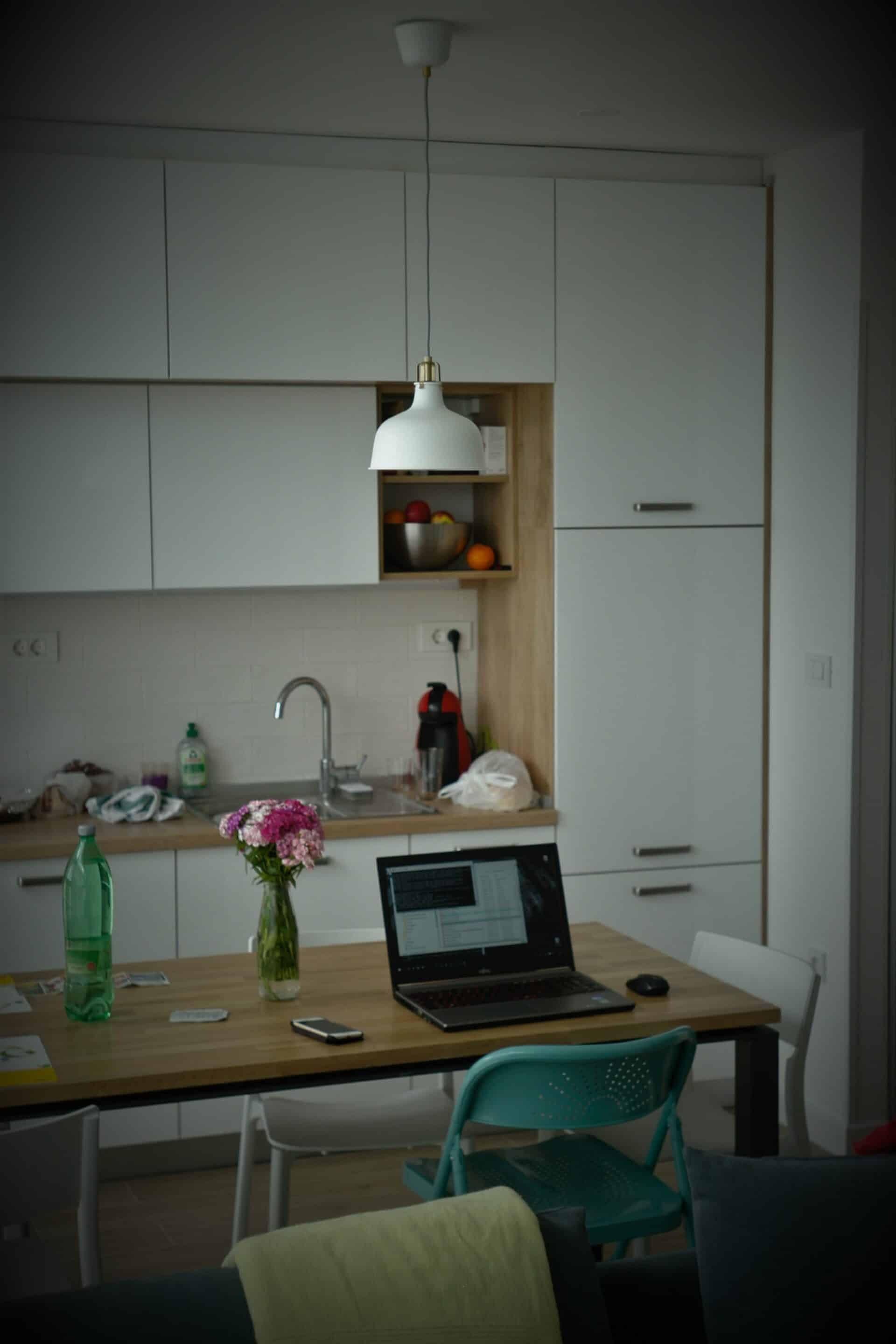
In general, only about 12.5% of ceiling light falls on your working area. That’s why task lighting is crucial to preventing eye strain. LED lamps for desks are designed to illuminate your specific working area, making tasks like reading, cooking, writing, knitting, etc. much easier on your eyes.
LED floor lamps
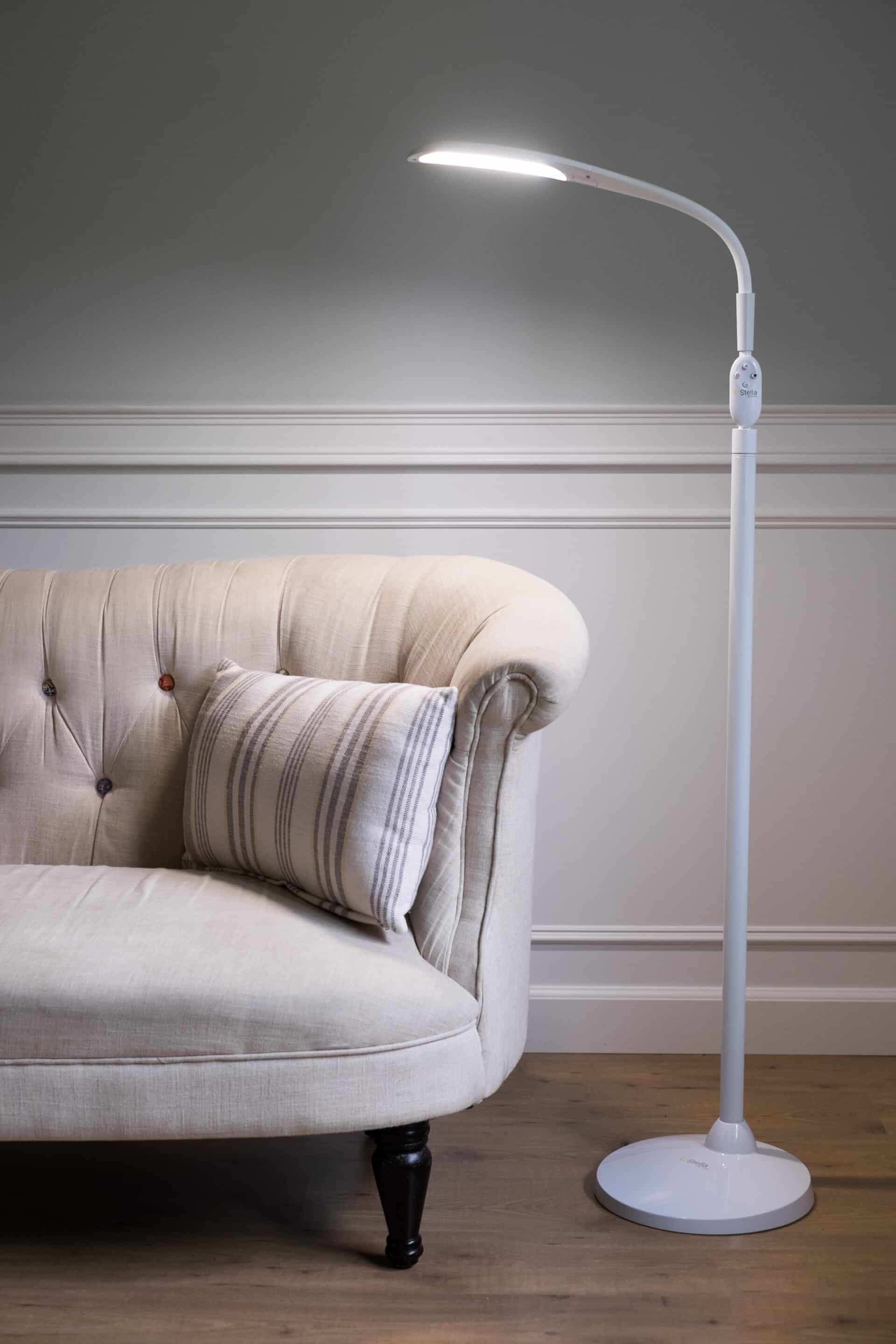
LED floor lamps are versatile. Much like LED task lamps, LED floor lamps provide targeted lighting for your workspace while also increasing the amount of ambient light in your room.
What is the best LED lamp for the visually impaired?
So, is there a LED lamp that synthesizes all key components of lighting for low vision? We’ve been on a quest to find one… a lamp that transforms living and working spaces for the visually impaired. After extensive research, testing, and talking to consumers, we’ve found the answer in Stella Lighting. Check out our 5-minute video below to learn more about why we believe Stella is the best lighting choice for low vision.
Last updated July 21, 2021
Author Information
By Bethany Wyshak. Reviewed by Stuart Flom.
Sources
BrainFacts.org (https://www.brainfacts.org/thinking-sensing-and-behaving/vision/2012/vision-it-all-starts-with-light), Ensight Skills Center (https://ensightskills.org/2011/02/02/importance-of-good-lighting/), Eschenbach (https://www.eschenbach-sehhilfen.com/en-GB/273/seeing-and-reading), Mayo Clinic (https://www.mayoclinic.org/diseases-conditions/glaucoma/symptoms-causes/syc-20372839#:~:text=Glaucoma%20is%20a%20group%20of,over%20the%20age%20of%2060, https://www.mayoclinic.org/diseases-conditions/presbyopia/symptoms-causes/syc-20363328), NKCF (https://nkcf.org/about-keratoconus/how-the-human-eye-works/), RGB Cataract and LASIK (https://www.rgbeyeassociates.com/macular-degeneration-sherman/), Texas School for the Blind and Visually Impaired (https://www.tsbvi.edu/light-and-low-vision), WebRN (https://www.webrn-maculardegeneration.com/low-vision-lighting.html), Williamson Eye Institute (https://www.williamsoneyeinstitute.com/other-diseases/retinitis-pigmentosa/)

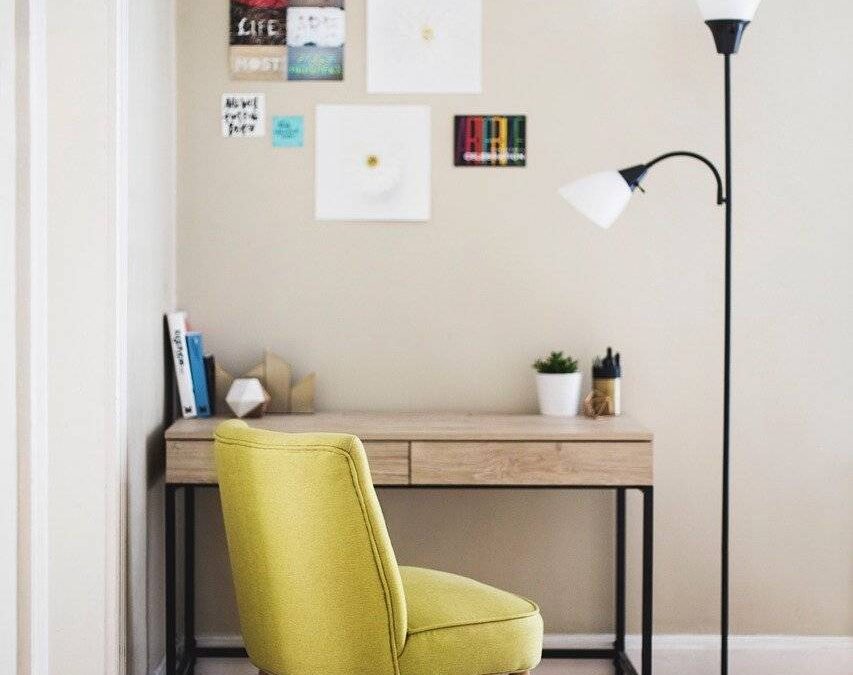












I appreciate this informative article. Excellent work!
Aris Vision CDMX
https://arisvisionmexico.com/
Thanks for educating me about LED Lights, Such a insightful information, It means a lot.
Thanks for reading!